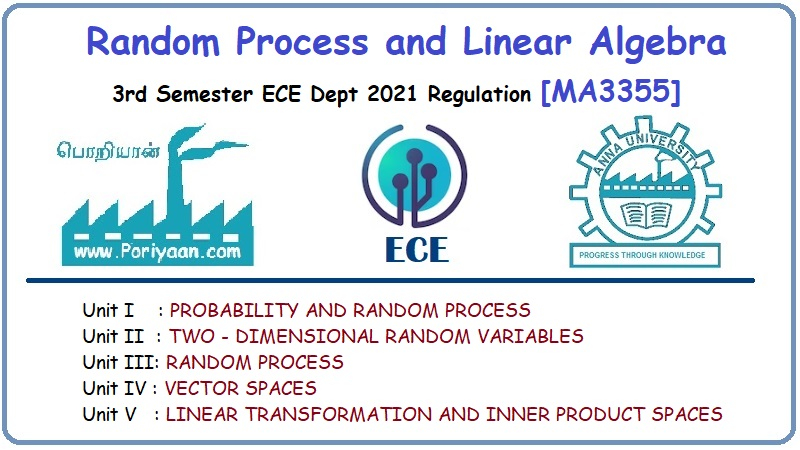Random Process and Linear Algebra: Unit V: Linear Transformation and Inner Product Spaces,,
Inner Product spaces - Parseval's identity - Bessele's Inequality
Problems under Inner Product spaces - Parseval's identity - Bessele's Inequality
(e) Inner
product spaces - Parseval's identity - Bessele's inequality
Problem 1.
Let V be a
finite-dimensional inner product space over F.
(a) Parseval's
Identity. Let = {v1, v2, ..., vn} be an
orthonormal basis for V. For any x, y Є V prove that

(b) Use (a) to prove
that if β is an orthonormal basis for V with inner product <.,.>, then
for any x, y Є V

where <.,.>' is
the standard inner product on Fn.
Solution
:
Let V is the
finite-dimensional inner product space over F.
(a) Let {v1,
v2, ..., vn} be an orthonormal basis for V.

We know that, property
of inner product space,

Use the above property,
and for any j
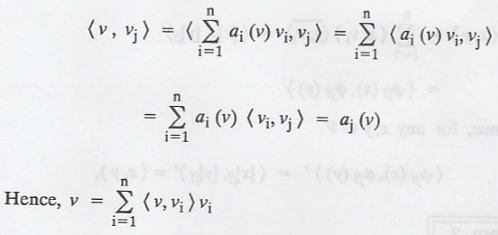
Since V has an
orthonormal basis and for any x, y Є V, then

Let the inner product
<x,y>
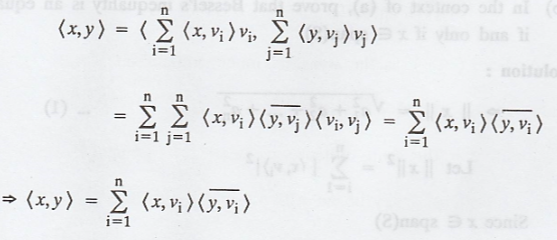
(b) From part (a)

Suppose β is an
orthonormal basis for V with inner product <.,.>, where <.,.>' is
the standard inner product on Fn
Then for any x, y Є V
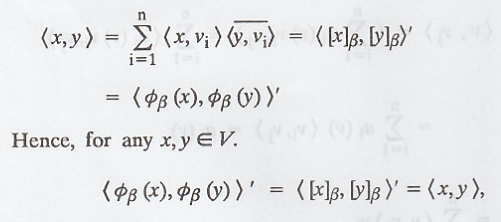
Hence, for any x, y Є
V.
Problem 2.
(a) Bassel's
Inequality. Let V be an inner product space, and let {v1, v2,
..., vn} be an orthonormal subset of V. Prove that for any x Є V we
have 
(b) In the context of
(a), prove that Bessel's inequality is an equality if and only if x Є span(S).
Solution
:


As,

Hence,

From (1), equality
holds
.'. Bassel's inequality
is equality if and only if x Є span(S)
Hence the proof.
(a) Let V be an inner
product space
And S = {v1,
v2, ..., vn} be an orthonormal subset of V.
To prove that for any x
Є V

Let W = span(S).
Here, W is a finite
diminished subspace of V.
Since x Є V, x can be
written as x = u + y, where u Є W and y Є W
Given : S is an orthonormal
basis of W.
"As W is a finite
dimmensional subspace of an inner product space V and let x Є V
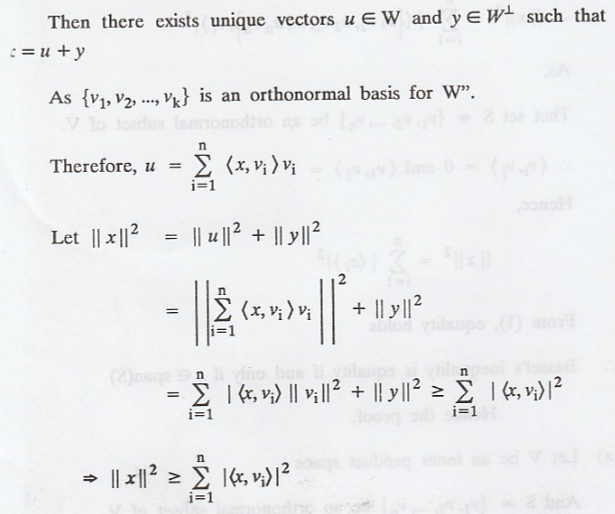
(b) To prove that
Bessel's inequality is equality if and only if x Є span(S)
Bessel's equality is,

Thus x can be written
as,
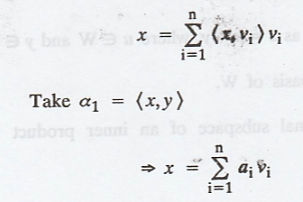
i.e., x can be written
as a linear combination of S = {v1, v2, ..., vn}
Thus x Є span(S)

EXERCISE
5.4
1. In each part, apply
the Gram-Schmidt process to the given subset S of the inner product space V to
obtain an orthogonal basis for span(S). Then normalize the vectors in this
basis to obtain an orthonormal basis β for span(S), and compute the Fourier
coefficients of the given vector relative to β.
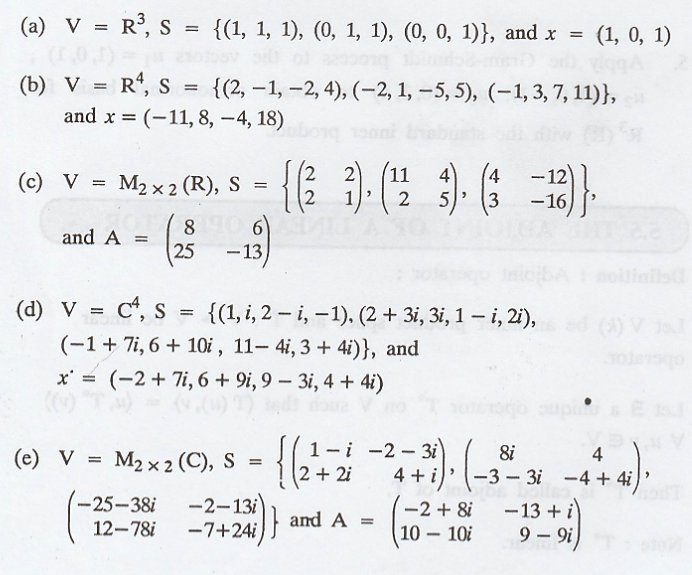
2. Linear
Transformation and Inner Product Spaces Let W be a subspace of the linear
product space V spanned by (0, 1, 1, 0), (0, 5, -3, -2), (-3, -3, 5, -7) find
an orthonormal basis for W.
3. Apply Gram-Schmidt
orthogonalization process to the vectors β1 = (1, 0, 1), β2
= (1, 0, -1), β3 = (0, 3, 4) to obtain an orthonormal basis {α1,
α2, α3} for R3 with standard inner product.
4. If S is a subset of
an inner product space, then prove that
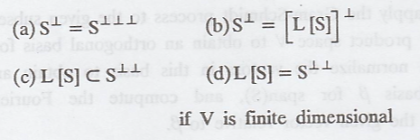
5. Apply the
Gram-Schmidt process to the vectors u1 = (1, 0, 1), u2 =
(1, 0, -1), u3 = (0, 3, 4) to obtain orthonormal basis for R3(R)
with the standard inner product.
Random Process and Linear Algebra: Unit V: Linear Transformation and Inner Product Spaces,, : Tag: : - Inner Product spaces - Parseval's identity - Bessele's Inequality
Related Topics
Related Subjects
Random Process and Linear Algebra
MA3355 - M3 - 3rd Semester - ECE Dept - 2021 Regulation | 3rd Semester ECE Dept 2021 Regulation
